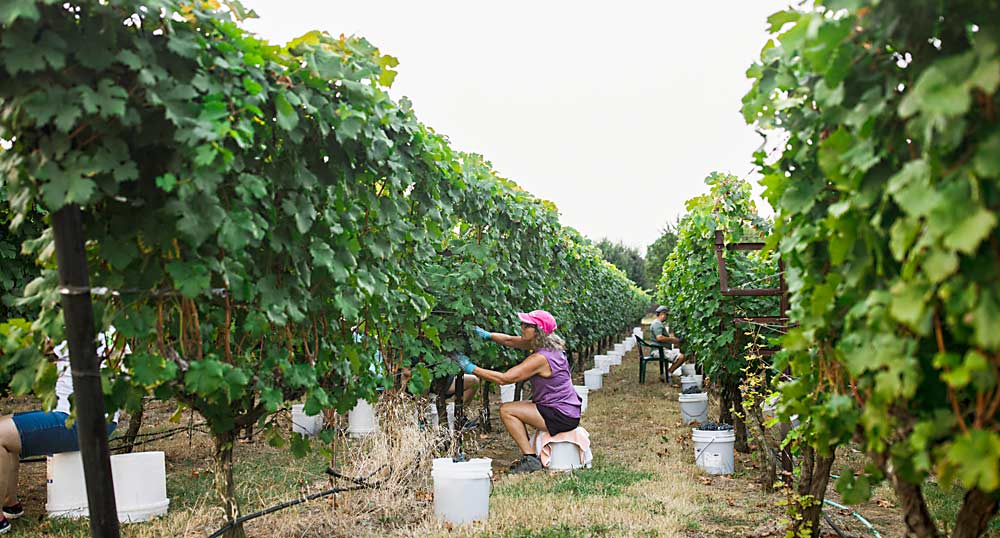
The growth of the Texas wine industry in the past two decades has been remarkable.
In 2000, there were 40 wineries in Texas. There are some 765 wineries today, and Texas now ranks third in the number of bonded wineries in the country.
The Lone Star State has the potential to become a major player in the national wine industry, but its own market is so big that it probably doesn’t need to. Texas’ per capita consumption of wine is still fairly low, but its population is so big that its wineries don’t need to ship much product out of state. Most wine made from Texas grapes is sold in Texas, said Justin Scheiner, associate professor and extension viticulture specialist at Texas A&M University.
On the other hand, those Texas grapes make up less than half the wine sold through Texas wineries. Much of the rest comes from California, Washington, Oregon and New Mexico — and the question is whether the state’s grape growers can keep up.
“We don’t have enough vineyards in the ground to support the winery growth,” said Roxanne Myers, president of Lost Oak Winery and past president of the Texas Wine and Grape Growers Association. “We have to fill that gap.”
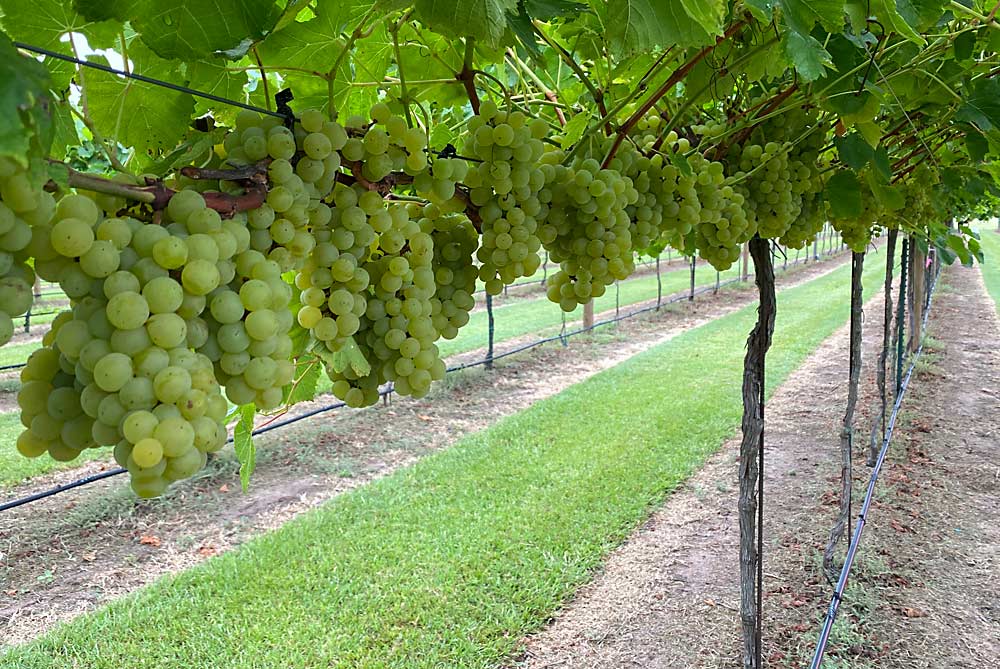
Extreme growth
Scheiner estimated the number of grape growers in Texas at 700, with at least 6,500 acres of vineyards. That’s up from 4,600 acres in 2017, when the U.S. Department of Agriculture last surveyed. And because the sprawling state encompasses a wide range of climates, harvest can begin as early as June in the southern part of the state, and run well into September.
In the eastern part of the state, small vineyards grow hybrid varieties such as Blanc du Bois and Black Spanish, preferred for their tolerance to Pierce’s disease, Scheiner said. Further west, larger vineyards grow vinifera varieties.
The “vast majority” of Texas grapes are in the northwest part of the state, in the High Plains and Panhandle. With more than 3,000 feet of elevation and 18 inches of rain a year, the semiarid and cooler climate is “pretty perfect for growing grapes,” said Daniel Pate, owner of vineyard management company Apical Texas.
Northwest Texas grows more than 80 grape varieties, including Cabernet Sauvignon, Merlot, Alvarinho Dolcetto, Pinot Noir and Zinfandel, just to name a few, Pate said.
“I’m fairly certain no other region in the world right now has this many varieties so widely distributed across a relatively small number of acres,” he said. “We’re producing wines the world has never had before from vineyards the world has never seen before.”
Most of those grapes are shipped to wineries in other parts of the state, especially the Hill Country in central Texas, which is popular with tourists, Pate said.
Overcoming hurdles
However, growing in the High Plains poses challenges.
The region is home to Texas cotton, and, according to many grape growers, herbicide drift from nearby cotton fields has injured their vines. A number of Texas grape growers recently filed a lawsuit against herbicide manufacturers, seeking millions of dollars in damages.
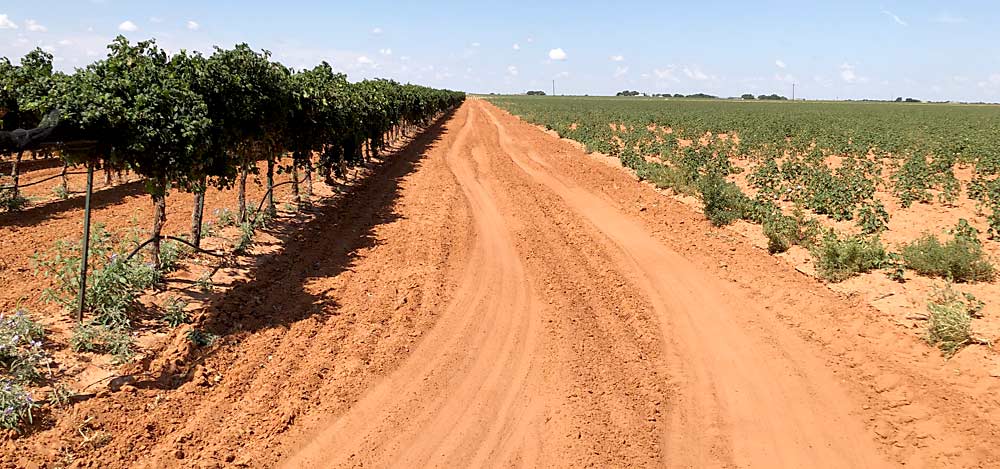
Freeze damage is another problem. In 2019, the High Plains experienced an autumn freeze event dubbed the “Halloween massacre,” when temperatures dropped more than 60 degrees in a 24-hour period. As a result, the state’s 2020 harvest was about half the size of the previous year. A severe freeze event in December 2020 also led to lower-than-average yields in 2021, Scheiner said.
Periods of drought are problematic, though water shortages aren’t nearly as bad as they are in California. Growers throughout the state use drip irrigation, Scheiner said.
Joe Riddle grows 2 acres of Cabernet Sauvignon in the High Plains. Thanks to the region’s aridity, he typically sprays pesticides only two or three times a year. But herbicide drift appears to have killed some of his new vines, and extreme drought cut his 2022 yields in half. An early September rain was the first significant rain he’d seen in nearly a year, he said.
Pate said most vineyards in the region are trained to a vertical shoot position system, with about 1,000 vines per acre. Some growers are playing around with different spacings and pruning methods. They grow a combination of grafted and own-rooted vines, he said.
Riddle’s vines grow on their own roots. He said own-rooted vines are cheaper than grafted vines and can be retrained after cold damage.
Despite the headaches, Riddle said growing grapes is a rewarding occupation. He’s always been able to sell his fruit.
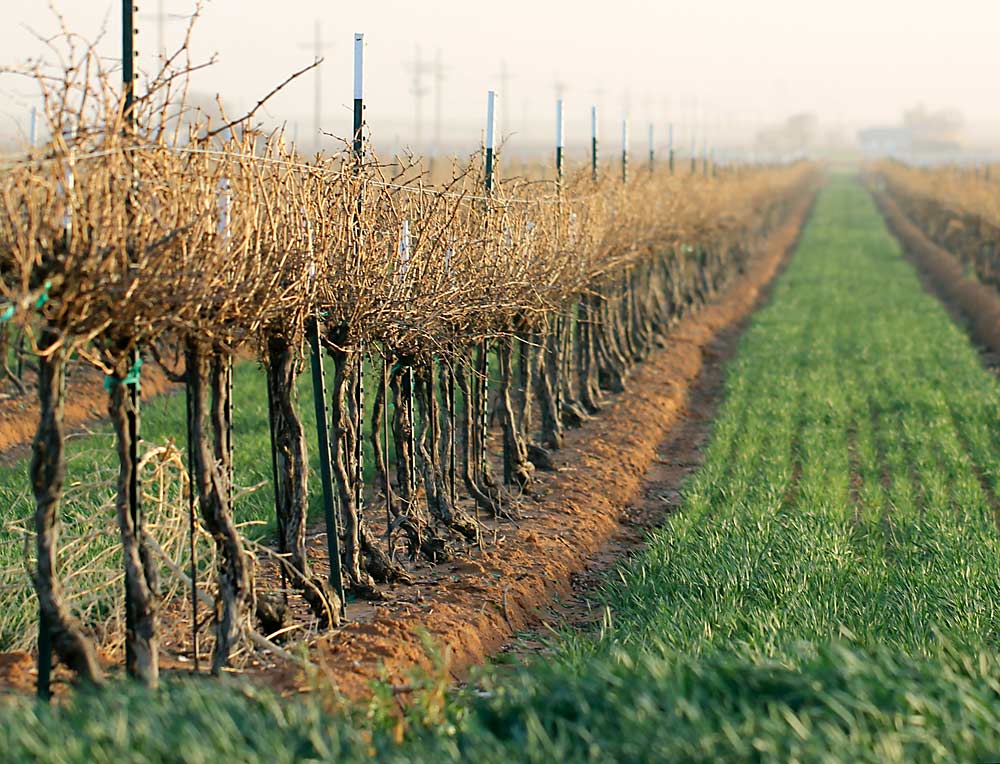
Other grape-growing regions in Texas have their own challenges. The state’s major pest is grape berry moth. Downy mildew is a problem in the eastern part of the state, powdery mildew in the west. Growers also must manage for black rot, phomopsis and anthracnose, Scheiner said.
To combat another widespread problem, Pierce’s disease, some growers plant disease-resistant hybrid varieties. They avoid planting in moist areas that might harbor high populations of the insect vector, the sharpshooter leafhopper, and they mow in and around vineyards to create buffer zones. They apply neonicotinoid insecticides via drip systems, Scheiner said.
Grapes are primarily machine harvested in Texas. The state’s grape growers don’t have too much trouble finding farm labor because many of them grow other crops, especially in the heavily agricultural western areas. Finding skilled managers is more difficult. But the Texas wine industry has grown big enough to start attracting outside expertise, Myers said.
After spending eight years in the California wine industry, Pate returned home to Texas to start Apical Texas and works with 26 vineyards on 650 acres in the High Plains. The Texas wine industry is a “new frontier,” he said, with no tradition of doing things a certain way. That makes it an exciting place to be — but every frontier has to settle down eventually.
“In the last 20 years, Texas has been in an experimental phase,” Pate said. “That’s great, but we have to stop experimenting and start producing.”
—by Matt Milkovich

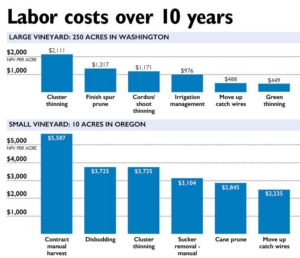





Leave A Comment